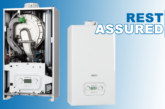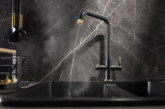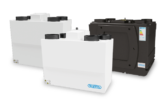
Communal heating schemes are becoming more widely seen, especially in high rise developments. Ian Lock, Special Applications Manager at Heatrae Sadia, examines the benefits and some of the key considerations.
In communal heating schemes (sometimes referred to as community heating, district heating or heat networks), heat is supplied to individual properties from centralised plant, with the heat being delivered through a common centralised distribution network.
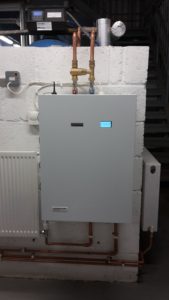 The concept is being more widely seen, particularly in multi-occupancy high rise schemes, such as apartment blocks. In these developments, centralised schemes can offer benefits over the more traditional solution of installing separate heating systems (which would typically comprise gas-fired combi boilers or a form of electric heating) in each individual property.
The concept is being more widely seen, particularly in multi-occupancy high rise schemes, such as apartment blocks. In these developments, centralised schemes can offer benefits over the more traditional solution of installing separate heating systems (which would typically comprise gas-fired combi boilers or a form of electric heating) in each individual property.
In particular, efficiencies can be increased and fuel consumption can be reduced. Using centralised plant also decreases the risks linked to gas distribution pipework, and eliminates the need to fit numerous flue terminals and plume displacement and condensate drainage systems, potentially reducing capital installation costs, depending on the size of the development.
Furthermore, if the dwellings are to be rented rather than sold, it makes servicing and maintaining the heating equipment much easier for the landlord, and removes the need for legally required landlord gas appliance checks to be carried out in each individual property (providing there are no other gas appliances installed).
Another benefit is that a number of different fuel sources can be used – and if low carbon technologies are adopted, energy costs and carbon emissions can be reduced even further. In fact, in its 2013 The Future of Heating: Meeting the challenge document, the Government suggested there is great potential to develop heat networks so that they can play a part in the move to low carbon heating.
Interface units
Heat interface units (HIUs), also known as heat boxes, will generally be used to provide the heating, or heating with domestic hot water, to individual properties, with the householder controlling their use of heat with either a room thermostat, a separate programmer or individual thermostatic radiator valves. Importantly, metering devices are incorporated into the HIU which allow the user to record the heat consumed for accurate energy billing; further guidance on metering can be obtained from The Heat Network (Metering and Billing) Regulations 2014.
Installing individual HIUs rather than individual boilers reduces installation costs, as total heating load can be optimised thus reducing the issues associated with oversized individual heat sources.
HUIs can be installed within each individual dwelling, or in the dividing wall between each dwelling and the ‘landlord’ space – the latter providing easy access for inspection and maintenance.
Cascade design
When using central boiler plant and HIUs, cascade systems can be considered within the design, supporting more efficient systems and lower return temperatures. In all cases the boiler plant must be capable of delivering peak space heating load, but HIUs incorporating a plate heat exchanger for domestic hot water require special consideration, as generally there will be a significant difference between heating and hot water loads.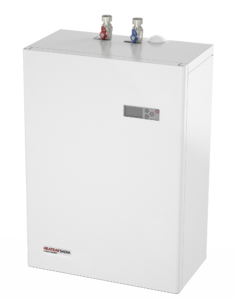
For example, heat loads for each dwelling could be in the region of 3 to 5kW, whereas 35kW or more is likely to be required for peak domestic hot water. For an economical and energy efficient solution to be achieved, appropriate coincidence factors need to be adopted so as to realise the benefit from the diversified load when determining plant capacity – in most cases this will involve consideration of the occupants’ lifestyles and typical use profiles.
Correct sizing
There is certainly no ‘one size fits all’ solution. Indeed, the success of a communal heating scheme largely depends on it being sized and designed appropriately for the demand of the building, and whether both the peak and base loads have been properly considered.
If oversized, it won’t just be the central plant that is too large; inevitably, other elements such as the pipework, distribution pumps, expansion vessels and inhibitor volumes required to protect the system (to name just a few) will increase – to the detriment of the system. For instance, greater diameter pipework leads to higher heat losses resulting from the larger surface area of the pipework.
Communal areas, including corridors and foyers, often fall victim to overheating caused by such heat losses in the pipework. This problem can be exacerbated by a lack of natural ventilation, additional waste heat from lighting, and the opening and closing of doors to individual dwellings where the heat is turned up high. As a result, effective insulation of the distribution network is a must.
When selecting HIUs for a scheme, specifiers should look for independent third party approvals to ensure that products comply with industry standards and regulations. For example, the NEMKO mark demonstrates that a product has been assessed for conformity to electrical safety legislation by a competent body, providing reassurance to the specifier, and assisting compliance under CDM regulations. Meanwhile, independent testing for water fittings guarantees that products are safe to use and will guard against the contamination of potable water supplies. Here, the industry standard third party certification is provided by WRAS or KIWA.
Compact design
The Hi-Max Instant ID from Heatrae Sadia has a compact design (it can fit into a standard kitchen cupboard) and comprises two generously sized plate heat exchangers – one for the hot water and one for the heating system. It is designed to ensure that the primary return temperatures going back to the centralised heating system are very low to maximise the operating efficiency of the system. A PID controller modulates flow to the unit in order to optimise performance, working with the room thermostat. It is suitable for single and dual zone heating systems.
It’s worth mentioning that while the use of HIUs eliminates the need for individual annual gas boiler checks, responsible manufacturers will always recommend regular services to check the system is still functioning correctly. The BSRIA HIU guide recommends that HIUs are serviced at least once every three years unless otherwise stated by the manufacturer.
In recent times there has been a trend towards centralised plant being used to deliver heating and hot water to individual properties in multi-dwelling developments such as apartments. This approach offers many benefits for developers and installation teams, including increased efficiency and lower installation and maintenance costs.


